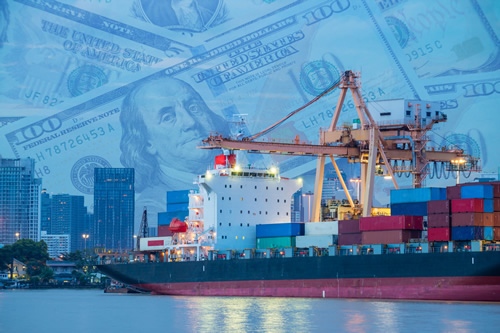Container Trade and the U.S. Recovery
A monthly index of the volume of container shipping sheds light on the determinants of U.S. manufacturing output and real personal consumption during the two most recent recessions.
A feature of the globalisation of the economy since the 1990s has been the growing importance of sea-borne container trade. With 90% of non-bulk dry cargo globally being shipped by container, there is a close relationship between the volume of container trade and domestic economic activity. For example, domestic manufacturing firms rely on imports of containerised raw materials and intermediate goods, while consumers routinely purchase finished goods arriving in their country by container. Container Trade and the U.S. Recovery, by Lutz Kilian, Nikos Nomikos, and Xiaoqing Zhou, is the first study to use fluctuations in the volume of container trade to help understand the business cycle in the United States, and the state of the economic recovery from the COVID-19 Recession.
This paper introduces a new monthly index of the volume of container trade to and from North America. Incorporating this index into a structural macroeconomic VAR model facilitates the identification of shocks to domestic U.S. demand as well as foreign demand for U.S. manufactured goods. It shows that, unlike in the Great Recession of 2007 - 2009, the primary determinant of the U.S. economic contraction in early 2020 was a sharp drop in domestic demand. Although detrended data for personal consumption expenditures and manufacturing output suggest that the U.S. economy recovered to near 90% of pre-pandemic levels as of March 2021, the structural VAR model shows that the component of manufacturing output driven by domestic demand had only recovered to 59% of pre-pandemic levels, and that of real personal consumption only to 76%. The difference is mainly accounted for by unexpected reductions in frictions in the container shipping market.
This work complements a growing literature on container shipping markets. Its focus on the interaction between container trade, global supply chains, and U.S. economic activity is new to the literature. The analysis also complements existing work on the relationship between input and output inventories and the business cycle.
Container Trade and the U.S. Recovery is published in International Journal of Central Banking. The accepted version of the paper is available for download at City Research Online.




